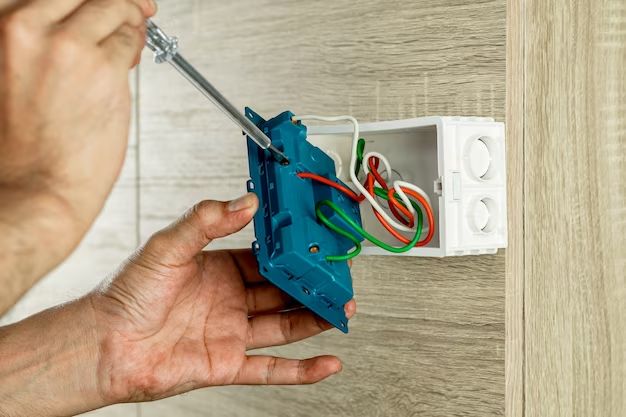Page Contents
Overview
Removing a plug wire is a common maintenance task for vehicle owners. Plug wires, also known as spark plug wires or ignition wires, deliver electric current from the ignition coil to the spark plugs which ignite the fuel in the engine. Over time, plug wires can become cracked, damaged, or simply wear out. Replacing old worn plug wires is part of regular vehicle maintenance and can help improve engine performance and fuel efficiency.
While removing plug wires may sound intimidating, it’s actually a relatively simple job that most vehicle owners can tackle themselves in about an hour or less. With some basic tools and safety precautions, you can remove your plug wires quickly and get new ones installed.
When to Replace Plug Wires
Some signs that your plug wires need to be replaced include:
- Visible cracks, damage, or corrosion on the wires
- Wires have over 100,000 miles of use
- Engine misfiring, hesitation, loss of power
- Reduced gas mileage
- Failed emissions test
- Rough idle
If you notice any of these symptoms, it’s a good idea to test and potentially replace your plug wires. While you’re replacing the wires, it’s also a good idea to install new spark plugs for optimal performance.
Safety Tips
When working under the hood of your vehicle, be sure to keep these safety tips in mind:
- Let the engine fully cool before starting – at least a couple hours after driving
- Disconnect the negative battery cable
- Avoid touching or dropping any metal tools on the battery
- Use jack stands if you need to get under the vehicle
- Don’t rush – work slowly and cautiously
Protecting yourself against burns, electric shocks, and other injuries should be your top priority. Having the right tools and workspace is also key for a smooth plug wire replacement.
Necessary Tools
You’ll need the following basic tools:
- Socket wrench set
- Extensions
- Spark plug socket
- Plug wire remover tool or needle nose pliers
- Ignition coil boot pliers (for coil over plug systems)
Optional helpful tools include a repair manual for your specific vehicle make and model, and a magnetic retrieval tool for dropping small parts. Don’t forget your new plug wires and spark plugs as well.
How to Remove Plug Wires
Once you’ve gathered the proper tools and supplies, follow these steps to safely remove your plug wires:
- Locate the plug wires. They’ll be connected to the top of the spark plugs and run to the ignition coil(s). Trace their path to identify each one.
- Clean the wires and surrounding engine area. Use a degreaser and wire brush if needed to remove grime and improve visibility.
- Disconnect the negative battery cable. Set it aside to avoid accidental contact.
- Label and remove the wires. One-by-one, pull the plug wire boot firmly out from the spark plug. Twist or rock it loose gently if needed. Use the plug wire removal tool for stuck boots. Label the wires with tape to identify their positions.
- Remove any fasteners or brackets securing the ignition coil(s) and/or plug wires, using the socket wrench.
- Detach the wires from the ignition coil(s). Pull them firmly from the terminals.
- Remove any wire looms, conduits, or heat shields as needed to fully extract the plug wires.
- Inspect the spark plugs. If they are worn, replace them now along with the plug wires.
Work slowly and carefully when detaching the often stiff and fragile plug wires. Using ample leverage and wiggling helps coax them off without damage. Keep the removed wires organized and marked for installation of the new set.
Installing the New Plug Wires
Installation of your new plug wires follows similar steps in reverse:
- If needed, install new spark plugs as directed by the manufacturer.
- Attach the new wires to the ignition coil terminals. Push them on firmly until they click/snap into place.
- Route the new plug wires into position along the same paths as the old set.
- Use zip ties or clips to fasten the wires to brackets or conduits as before to prevent contact with hot or moving parts.
- Push the wire boots firmly over the spark plugs until properly seated.
- Double check that each wire is routed correctly to the corresponding cylinder spark plug.
- Replace any brackets or components that were removed.
- Reconnect the battery cable.
Having the engine layout diagram for your specific vehicle is invaluable for proper plug wire routing. Carefully follow any diagrams provided with the new wire set. Improper connection can lead to ignition misfires and engine damage.
Testing the New Wires
Once installed, test the new plug wires:
- Start the engine and let it idle, checking for any misfires or roughness.
- Give the engine a few revs and make sure it responds smoothly.
- Take it for a short test drive and listen for any odd sounds or behavior.
- Retest any trouble codes using an OBD-II scanner if the check engine light was on previously.
- Visually inspect the wires again once more while the engine is running.
If you notice any unusual sounds, smells, or check engine lights, shut off the vehicle and double check for any incorrectly routed or loose wires. The new plug wire set should markedly improve performance.
Conclusion
While removing your vehicle’s plug wires requires care, it’s a doable DIY job. With standard tools, labeled wires, and patience, you can replace old worn-out wires in about an hour or less. Take all necessary safety steps, follow your vehicle diagrams, and properly route the replacements. Test driving your vehicle after a plug wire replacement will quickly show if your efforts were successful. Investing in this important maintenance improves engine function and can add miles to your vehicle’s lifespan.
